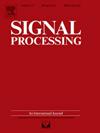可逆对抗性可见图像水印
IF 3.4
2区 工程技术
Q2 ENGINEERING, ELECTRICAL & ELECTRONIC
引用次数: 0
摘要
可见水印是保护数字图像版权的重要安全机制。然而,最近的进展表明,深度神经网络可以在不改变底层主机图像的情况下有效地去除这些水印,这对版权保护构成了重大风险。由于神经网络对对抗性扰动的敏感性,各种对抗性可见水印技术已经被引入。尽管如此,这些方法往往忽略了对图像可逆性的需求,这对于在保持隐私的同时进行授权共享至关重要。为了解决这个问题,我们提出了可逆对抗性可见水印(RAVW),它使用梯度加权类激活映射(Grad-CAM)来确定主图像中最适合水印嵌入的重要区域。然后,它采用端到端生成模型在这些区域内创建可逆的对抗性可见水印,有效地抵消水印去除网络。此外,授权用户可以通过专用的恢复模块消除可见水印。综合实验评估证实了我们的方法在保留可见水印方面的鲁棒性和对水印去除网络的有效性。本文章由计算机程序翻译,如有差异,请以英文原文为准。
Reversible adversarial visible image watermarking
Visible watermarking serves as a crucial security mechanism for safeguarding the copyright of digital images. Recent advancements, however, have shown that deep neural networks can effectively remove these watermarks without altering the underlying host image, posing a substantial risk to copyright protection. Motivated by the susceptibility of neural networks to adversarial perturbations, various adversarial visible watermarking techniques have been introduced. Nonetheless, these approaches often overlook the need for image reversibility, which is vital for authorized sharing while maintaining privacy. To address this issue, we propose Reversible Adversarial Visible Watermarking (RAVW), which uses Gradient-weighted Class Activation Mapping (Grad-CAM) to pinpoint the important regions in the host image that are optimal for watermark embedding. It then employs an end-to-end generative model to create reversible adversarial visible watermarks within these regions, effectively counteracting watermark removal networks. Additionally, authorized users can eliminate the visible watermark via a dedicated restoration module. Comprehensive experimental evaluations confirm the robustness of our method in preserving visible watermarks and its effectiveness against watermark removal networks.
求助全文
通过发布文献求助,成功后即可免费获取论文全文。
去求助
来源期刊

Signal Processing
工程技术-工程:电子与电气
CiteScore
9.20
自引率
9.10%
发文量
309
审稿时长
41 days
期刊介绍:
Signal Processing incorporates all aspects of the theory and practice of signal processing. It features original research work, tutorial and review articles, and accounts of practical developments. It is intended for a rapid dissemination of knowledge and experience to engineers and scientists working in the research, development or practical application of signal processing.
Subject areas covered by the journal include: Signal Theory; Stochastic Processes; Detection and Estimation; Spectral Analysis; Filtering; Signal Processing Systems; Software Developments; Image Processing; Pattern Recognition; Optical Signal Processing; Digital Signal Processing; Multi-dimensional Signal Processing; Communication Signal Processing; Biomedical Signal Processing; Geophysical and Astrophysical Signal Processing; Earth Resources Signal Processing; Acoustic and Vibration Signal Processing; Data Processing; Remote Sensing; Signal Processing Technology; Radar Signal Processing; Sonar Signal Processing; Industrial Applications; New Applications.
 求助内容:
求助内容: 应助结果提醒方式:
应助结果提醒方式:


